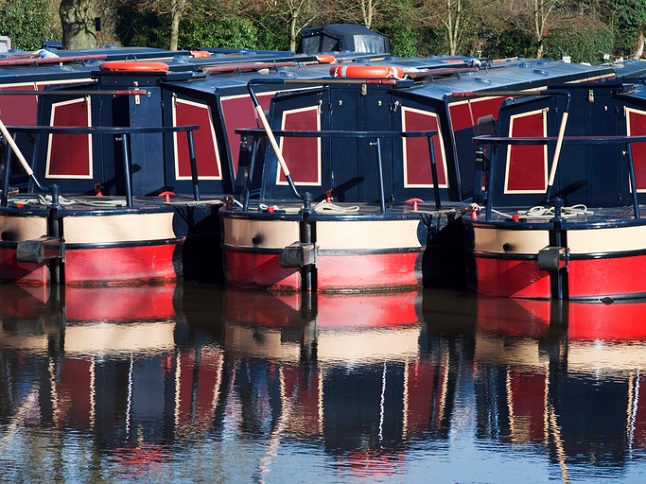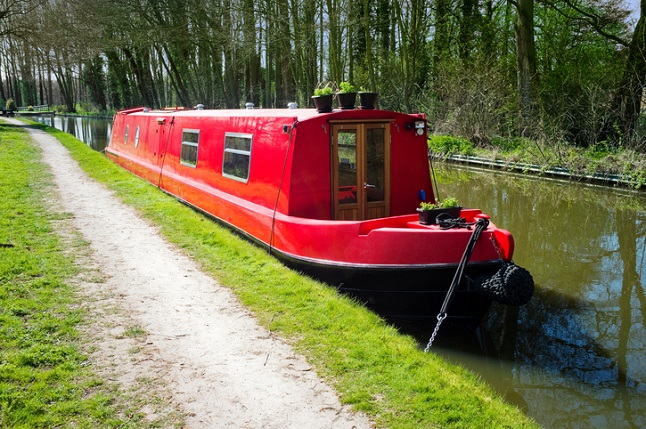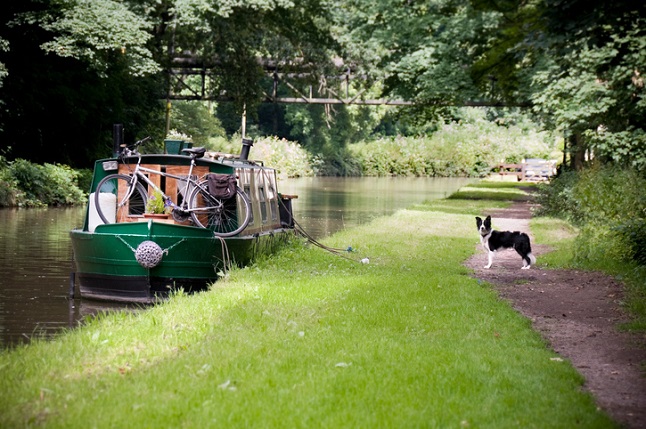Narrowboat Maintenance Guide
Whether you love tinkering with machines, or find the prospect of opening an engine somewhat daunting, it is essential that you maintain and service your narrowboat. Repairs or replacements for your boat can be costly, and are often caused by lack of engine knowledge or simply from using the wrong battery. Other times, it could be an alternator failure, water contamination or a broken cable.
Narrowboat maintenance checklist
It's recommended that you regularly carry out the following tasks for your narrowboat:
-
Check your oil levels
-
Clean the boat's engine and check it's in good condition
-
Plug any leaks
-
Check the bilge pumps are working
-
Inspect the battery and top-up with de-ionised water
-
Look for any loose bolts or pipes
-
Inspect the cables and control equipment for signs of wear and tear
Narrowboat engine maintenance
Most narrowboat engines are located onboard, typically under the deck of cruisers and semi-traditional boats, or in an engine space in the rear cabin for traditional barges. Smaller craft may have an outboard motor.
Most narrowboats run on a modern diesel engine, which offers maximum power, fuel efficiency and a quieter ride, but some boaters prefer a traditional diesel engine for its nostalgic chugging noise.
Frequent engine maintenance tasks
The engine is the beating heart of your boat – make sure you keep a close eye on the following:
-
Fluid levels: Check the oil level in the engine and gearbox, your coolant level and your levels of battery fluid.
-
Drive belt: Ensure the drive belt has enough tension and monitor for visible signs of wear.
-
Moving parts: Ensure all moving parts of the engine are greased and bolts and connections are tight.
-
Fan belt: Look out for signs of visible damage or looseness.
Common engine issues
Carrying out regular preventative maintenance on the following engine components could save you from a costly repair call-out.
-
Bilges
If your bilges are full of oil and water, this dangerous mixture could get into the engine with potentially disastrous consequences. It is important that you do not discharge the oil with the bilge pumps into the waterway but to manually dispose safely ashore.
-
Gearbox/Drive plates
If you hit an underwater object, the drive plate is usually the first victim. As canal boats don't have a clutch arrangement, gear boxes tend to receive a fair bit of abuse, so go easy and regularly service them.
-
Fan belts
Always carry a spare alternator belt, and check its condition before setting off. Simply twist the belt and if there are cracks, or the edges are starting to look ragged it's time for a new belt. If you hear 'squealing' from an old belt, it probably needs replacing. If it's from a new belt, an adjustment is required.
-
Couplings
If the bolts connecting the propeller shaft to the engine are loose, any movement will either sheer them off, which can result in loss of propulsion. Eventually the coupling will need replacing, and you may even have to change your prop shaft if the coupling has damaged it.
Narrowboat batteries
A standard narrowboat will have a minimum of two batteries: leisure batteries, which keep your heating and electrics running while you are cruising, and starting batteries, which provide the power to turn on your engine. Narrowboat batteries follow the same principle as car batteries – they recharge as the engine is running. However, if left unused for too long, or if damaged, they can run flat.
Your first warning sign of a battery with problems may be a flashing light on your dashboard - though this would not be in the case of older boats, which do not have dashboards. As soon as you become aware of problems with the batteries then immediately stop and investigate. You should also invest in a voltmeter from your marina store to check the state of the battery's charge. If your battery is running at less than 75% of its original capacity, you should aim to charge up as soon as possible.
How to maintain a narrowboat battery
Here are six steps to follow for maintaining your narrowboat battery:
-
Wear protective clothing and rubber gloves whenever working with the battery
-
Inspect the batteries for cleanliness
-
Use a dry cloth or kitchen towel to remove grime and absorb any moisture
-
Use petroleum jelly to coat terminals
-
Top up the electrolyte with distilled, de-ionised water
-
Invest in a spare multi-stage battery charger and carry it on board for emergencies
Narrowboat electrics and wiring
Wires coming away or corroding are common causes of problems on narrowboats. Before any trip, inspect your craft for loose connections and disconnected wires. Use a water-resistant spray or a petroleum jelly to prevent damp from getting into vulnerable components, such as isolators and block connectors.
There are rules and regulations provided by the Recreational Craft Directive about the installation of electrical systems on small craft. Unless you’re totally comfortable with electrical systems, it’s generally advised that you see a specialist about repairs.
Water holding tanks
Water holding tanks are normally found in the hull, although in some boats they will be kept in a separate container for easier access and removal. There is always a risk of leaks from tanks, especially as they get older, so you need to inspect them on a regular basis. When it comes to drinking water, this can gradually acquire a ‘tank taste’ which, while not harmful, isn’t particularly pleasant either.
Keeping water fresh in holding tanks
The most effective option for cleaning your water tank system is to leave a solution of chlorine or hydrogen peroxide in the system for 24 hours, before flushing it out. However, please be careful if you do this, as if it is not done correctly you may cause harm. Shorter term solutions include:
-
Water purification tablets: If you’re filling up from an untreated source, these are essential and will make the water clean and safe to drink.
-
Boiling: It’s simple and effective, although it can be energy intensive.
-
Filters: Not especially effective, but it can keep out larger particles of dirt.
-
Bottled water: Although it can be expensive, bottled water might be the easiest option.
Water and bilge pumps
Your narrowboat’s water and bilge pumps are typically situated within the engine space. The most basic pumps are hand-operated, but there are also different types of manual, electric and automatic electric pumps. Check your narrowboat’s manual for advice on their usage.
A bilge pump should always have a power connection so ensure it is wired to the main batteries in the craft. When you turn the power off to leave the boat unattended, you don't want to turn off the bilge pump. Therefore connect an automatic bilge pump directly to the battery, not through the distribution panel.
Narrowboat water pump problems
-
Broken accumulator tank
If the accumulator tank is full, the pumps can’t function properly.
-
Water not flowing
You may have a worn or broken part in the pump.
Narrowboat heating systems
There are three common heating options in a narrowboat. These are sometimes found on their own, but can also work in conjunction with one another:
-
Diesel-fired central heating systems
These work the same as the boiler in your home making them a popular option and require annual maintenance.
-
Gas systems
These run off bottled gas, which is normally stored in a locker on the boat. It’s cheap and efficient, but there’s a risk of portable bottles being stolen. Gas systems should be checked annually by a qualified gas engineer.
-
Multi-fuel stove
Capable of burning both wood and coal, these are appealing but can take up extra space – both for the heater itself, but also for the fuel.
Narrowboat windows
There’s a huge range of narrowboat window and porthole types available, although basic maintenance is common to all. To keep the heat in and prevent mould build-up, check liners and seals for signs of wear and tear, and replace if they begin to look shabby.
Narrowboat hull inspection
The hull of your narrowboat will take the brute force of the elements. This means it should undergo regular inspection to avoid leaks and other damage. It’s best to keep an eye on rust, corrosion and pitting, and don’t forget to have the inside of the hull checked over too.
Since the hull is normally out of view, you will need to organise regular inspections by a professional. You will be required to take the boat out of the water in order for a marine surveyor to carry out a review of the state of the hull. As a rule of thumb, this should be done every three to four years – or more often if you’ve sustained any accidents.
A qualified marine surveyor can inspect cruising damage, hull build quality, outlets and penetrations, and plate thickness.
Hull blacking
Blacking the hull helps to maintain the condition of your narrowboat by minimising the risk of rust and corrosion. Hull blacking involves extensively repainting the hull, and this should normally be done every two to three years.
It is entirely possible for you to black your boat's hull yourself. However, you will, of course, need the means to take the boat out of the water, and the time to paint it – meaning most boaters get it done by professionals at a marina. Blacking the hull will take up to three days and involves cleaning the hull of muck and grime then applying a couple of coats of hard-wearing paint, before drying and returning to water.
Preparing for the long haul
By taking the time to keep your narrowboat maintained, you will save yourself considerable money involved in repairs, replacements and call-outs. Keep our guide handy and follow the steps to ensure you stay cruising for years to come.
About the author
Adam Summersby is a respected leader with 11 years’ varied experience in niche personal and commercial lines insurance, including caravan, site operators and excess reimbursement, with proficiency in leadership, sales and account management.
Date: October 02, 2017
Category: Boat








